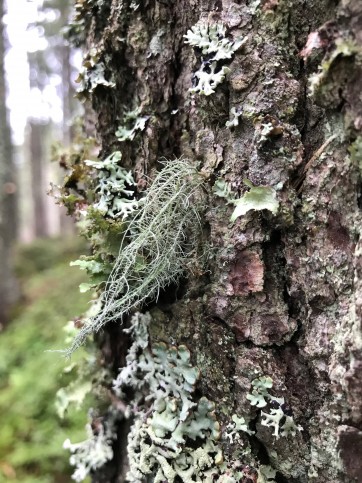A group of scientists led by experts from the Department of Forest Ecology at the Faculty of Forestry and Wood Sciences of the Czech University of Life Sciences in Prague studied the long-term impacts of natural disturbances on species richness and lichen composition in primary forests, with a particular focus on endangered and rare species whose presence indicates preserved natural environments with high biodiversity of forest organisms. The occurrence of endangered and rare species has demonstrated the important task of preserving native mountain forests and their high potential for biodiversity protection.
To preserve forest biodiversity tied to the fragments of native mountain forests, it is essential to understand how these forests change over time. These changes are affected by natural disturbances, such as storms or bark beetles. Although the number of studies in this field has grown in recent years, we still know little about the long-term impacts of disturbances on specific taxa, such as lichens. “The biological heritage of natural disturbances, represented by standing dying and lying dead trees is very important substrate for lichens. However, it is a relatively rapidly changing substrate and present only at certain stages of forest development, so that populations of these lichen-bound species in the region could survive permanently, they must be able to colonize new sites with a sufficiently rich biological heritage at a reasonable distance.“ says Jeňýk Hofmeister of the Department of Forest Ecology. For the long-term protection of populations of these sensitive species, it is not enough to protect only small fragments of preserved forests because they are part of a larger landscape surrounded by forests that are affected to varying degrees by forest management. These surrounding forests may also support lichens that can colonize new habitats created by disturbances in areas where they have been temporarily absent.
The data on which the study was based were obtained in primary mountain spruce stands across the Western Carpathians, a European biodiversity hotspot. The presence of epiphytic and epixyl lichens was studied on living trees, snags, and downed logs in a total of 57 study plots. Based on the reconstruction of the disturbance history of those plots, we tested how species richness and lichen composition were affected by the current stand structure and disturbance regimes over the last 250 years.
The results of the study showed that standing trees, especially those with greater thickness, are a particularly important element for increasing the species richness of lichens. On the other hand, although the lying dead wood hosted species-poorer communities, they also hosted more unique species. Overall, species richness of lichens was lower in regenerating young and homogeneous forests compared to older, more mature forests, which have not experienced large disturbances for longer time periods. Thus, although these ancient forests are losing vitality in terms of tree growth, they are becoming increasingly valuable in terms of biodiversity.
“We recorded 158 species of lichens from 65 genera. According to the Slovak Red List, 3 species considered to be extinct (EX) were confirmed, including Usnea scabrata, Lecidea huxariensis, and Fellhanera bouteillei, 20 critically endangered (CR), 9 endangered (EN), and 8 vulnerable (VU) species. The five endangered lichens included in the study had more than 100 occurrences: Bryoria fuscescens (VU), Hypogymnia farinacea (VU), Mycoblastus sanguinarius (CR). A quarter of all occurrences belong to endangered species“, says Josef Halda of the Department of Biology at the University of Hradec Králové. The most valuable localities for rare lichen species are the Bielovodská and Koprová valleys, where the rare crypt Gyalecta friesii was rediscovered at the new locality. The occurrence of this lichen was last confirmed in Slovakia over 30 years ago, and only in one locality. Strict protection of these sites is very important for the protection of lichen species, and a sufficient size of non-intervention areas is essential to maintain the maximum species diversity of lichens. Primary forests are the last refuges of biodiversity from which endangered species can increase viable populations and spread across the landscape and many species rely on them exclusively.
The natural dynamics of forests are crucial for the diversity and species composition of lichens, and the provision of no-intervention areas of sufficient size is essential to ensure constant habitat variability at landscape levels. Ongoing climate change is likely to accelerate this issue in the future, so preserving the last fragments of primary forests and increasing the protection of adjacent managed forests is essential for the survival of regionally important lichen species.
STUDY PUBLISHED IN JOURNAL OF VEGETATION SCIENCE FIND HERE.
PICTURES FROM THE BIELOVODSKA AND KOPROVA VALLEY CAN BE FOUND HERE.




